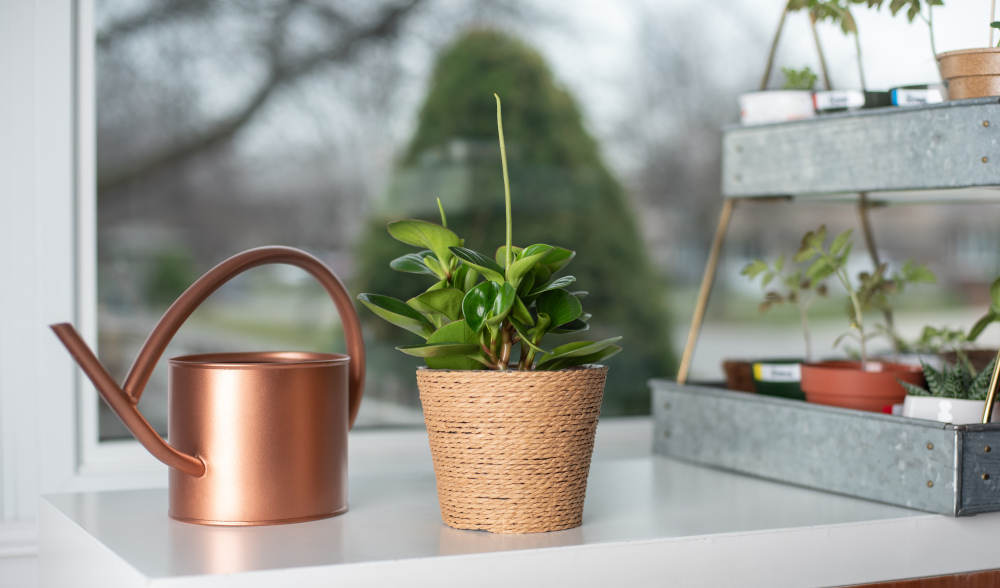With temperatures rising and sunny days ahead, spring is a great time to do some basic plant maintenance. Remember, plant care is self-care!
Here are a few answers to some of the top questions you may have about spring plant maintenance:
1. When should I fertilize my plants?
Generally speaking, plants should be fertilized during their active growth period, at least once per month. This helps give plants a boost of nutrients right when they need them the most, to help them grow strong and healthy.
If you’re not quite sure what fertilizer your plant will need, a standard fertilizer formulated for indoor plants with a balanced ratio of nitrogen (N), phosphorus (P) and potassium (K) should do the trick.
Keep in mind that not all plants start their growth period in the spring. Aloe, haworthia, sansevieria and crassula, for example, are winter growers that are dormant in the hottest months of the summer.
2. When can I put my plants outside?
You may be tempted to bring your plants outside as the temperature rises, but be sure to check the average forecast first. Most standard houseplants are tropicals or succulents that originate from warmer climates and are not cold-hardy. Most houseplants can tolerate temperatures down to 50°F (10°C) for short periods of time, but temperatures of 60-75°F (15-24°C) are optimal. In the fall, plants should be brought inside before the first frost.
For more information about optimal growing temperatures for your specific plants, please consult our Collections + Care database.
3. Can plants get sunburnt?
Yes! Plants can get sunburnt. Even plants like succulents that typically withstand a lot of sunlight can get sunburnt after spending an extended time indoors. Most plants that thrive on bright light can only tolerate full sun for a few hours per day, which is why bright and indirect light is best. If moving your plants outside, be sure to check if they can tolerate full sun, or if they prefer more shade. If bringing your plant outside after spending an extended time indoors, you may want to acclimate your plant gradually until it gets accustomed to brighter light. This can be done by starting your plant off in a shaded area for a week or two, then moving to an area of dappled light or partial shade, then bright indirect light, and then full sun (if the plant is full-sun tolerant). This acclimation process may take several weeks, but is helpful to keep your plants from getting too much sun exposure.
4. Should I change my plant care routine?
During the winter, many plants will go into dormancy/hibernation and require less moisture. When their growing cycle restarts in the spring or summer, you may find that they will need more water and to be watered more often. How much water and how often to water will depend on the particular plant and environmental conditions. Most non-succulent plants actually prefer being watered only once every 7 to 10 days or so, allowing their soil to dry out slightly, which helps increase air flow to the roots and helps prevent root rot (one of the most common plant killers).
5. When should I repot my plant?
Spring (or the beginning of the active growing cycle) is the best time to repot, as it gives the roots time to grow into their new soil. If you recently purchased your plant, it likely won’t need to be repotted again until next year.
Some signs that your plant is ready to repot are:
- the plant has grown significantly larger;
- the soil and roots have started to pull away from the edges of the pot;
- the plant’s growth has slowed even in it’s active growing period; and/or
- roots are pushing the plant up and out of its container, or are growing out of the drainage holes underneath.
Happy planting!
